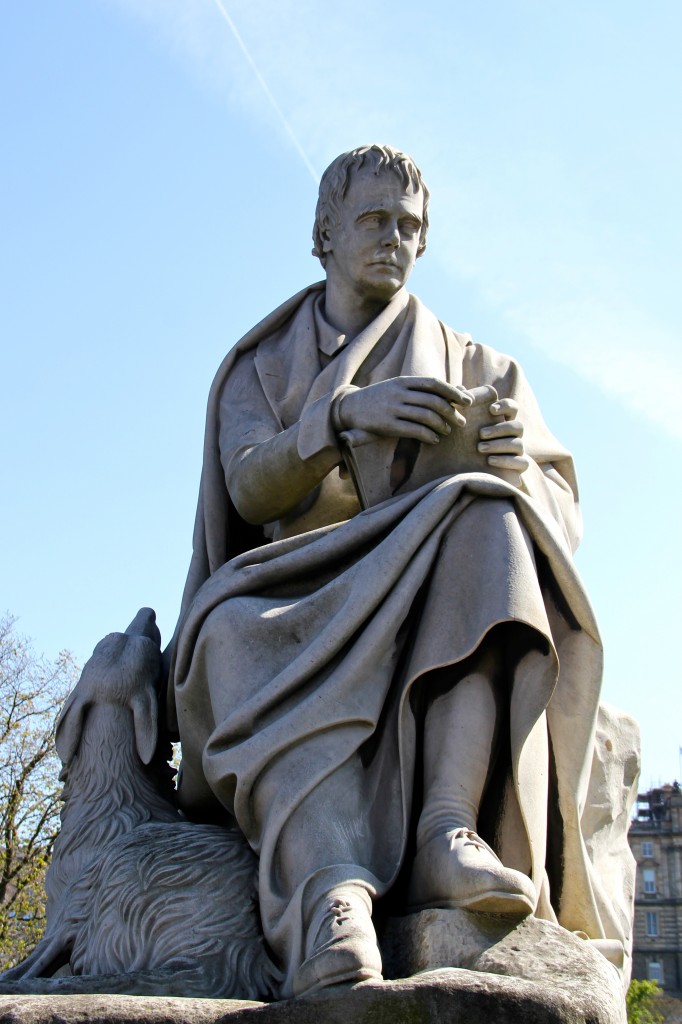
A year and a month before September 18, the date Scotland will vote on its independence from Britain, I went on accident to the Edinburgh Fringe Festival. It wasn’t an accident in the sense that I intended to go to Edinburgh, but it was in the sense that the Fringe was just peculiar, bewildering background noise that kept banging on while I was in the city, and that then droned through everything I did. In fact, the reason for the trip lay not in Edinburgh at all — I was accompanying my dad, who was giving a paper at a Thomas Pynchon conference in Durham, England. The conference featured an abnormal amount of muted post-horn tattoos, and though I attended some panels, I spent most of my time sleeping late, trying to find increasingly picturesque riverside locations to hold but not read Virginia Woolf’s Orlando, and stare at the cathedral in the middle of town.
Before there was Durham, however, there was Edinburgh, if only for two days. I had never been to a “fringe festival” before. They’re perfect, I learned, if you enjoy quirk, consider stand-up comedy your preferred form of art, and like amateur renditions of plays that have been “re-imagined” and crammed into one-hour performances. On the first day my dad and I woke early, walked downtown, and watched a man without sleeves eat fire. This is what vacation is really about, I thought to myself, looking at the crowd. Turning my head I noticed that twenty yards away, with little to no barrier in between, another man, with sleeves, was also eating fire. Edinburgh, the city’s tourist buses proclaim, is “a city of contrasts.”
I began to wonder what city doesn’t advertise itself as a city of contrasts. Edinburgh is an imperial city, decorated as an ode to the British crown. Princes Street presides over the sunken Princes Street Gardens; close by British flags reach above Scottish ones, and a few blocks uphill into the Old City lies the Royal Mile, tourist center and hotbed of Fringe-associated quirk, bookended at one end by Edinburgh Castle and at the other by the Queen’s city residence. The city’s statues, however, are of Scottish heroes, almost exclusively. I had my picture taken next to the colonial explorer David Livingstone, Sir Walter Scott, Sherlock Holmes, and a monument to the Scottish soldiers who fought in one of the Boer Wars. A pattern appeared.
Livingstone, perhaps, is the easiest example; Scott, the best. Bleached then by smears of bird shit, Livingstone’s historically dubious statue has him dragging along a conquered lion while diplomatically extending a Bible — the Scottish figure not as national but rather an imperial hero. Its neighbor, the Scott Monument, is Edinburgh’s most impressive statue: tall, Gothic, a spire jutting into the skyline and the writer underneath, enshrined and in robes. After walking around it, thinking, and then returning to my hotel room, I began to reframe the city and the country’s possible independence through my impressions of Scott, seemingly Edinburgh’s most central and curious hero. He has impeccably Scottish credentials, as the writer of historical novels that unfold Scotland’s romantic myths, and yet his official knighted status reveals how he’s also a fundamentally British literary figure, in a way that — something dialectical is happening — only ensures his reputation as a lionized Scot.
Critics frequently tout the post-coloniality of Irish writers. In Ulysses’ “Oxen of the Sun” episode, Joyce shifts between styles, parodying all of British literary history, from Anglo-Saxon to Dickens. Leaving aside its technical brilliance, what elevates it above pastiche is its openness to post-colonial critique: Joyce, the colonized Irishman, here masters and subverts the literary technologies of the colonizer.
Would anyone ever attempt a post-colonial reading of Scott? For a useful experiment compare Scott’s The Heart of Mid-Lothian with the Kenyan novelist Ngũgĩ wa Thiong’o’s Petals of Blood. Both novels are narratives of improbable journeys, and both share the same spatial logic. In Scott’s novel the young Effie Deans begins in provincial Edinburgh and proceeds on foot to London where she meets the Queen and receives a pardon for her innocent sister, accused of infanticide; in Ngũgĩ’s a tribe walks from the plains to Nairobi for drought assistance and receives nothing. In one, the legacies of colonialism are exposed (scarce state resources, corruption, arbitrary borders); in the other, the happy union between Scotland and England is symbolized, and the realities of colonialism transcended. This is the key to Scott’s celebrated nationalism: his imagined Scotland must eventually find its proud place in Britain’s imperial system.
Scotland and Ireland, of course, have had very different relationships with the Crown. England incorporated Scotland into Britain first and more fully. Scott’s mythic union, though, remains idealistic. The September 18 referendum asks: “Should Scotland be an independent country?” Polls tend towards no, and a well-heeled campaign touchingly named “Better Together” is working to keep it that way. (The pro-independence campaign, run by the Scottish National Party, is comparatively low on funds.) Will Scotland become independent? The ideology of Edinburgh’s cityscape indicates it won’t. But cityscapes, especially during the thrills of festival season, aren’t very good at revealing the long simmering resentments underneath history’s triumphant narratives.
This post may contain affiliate links.








